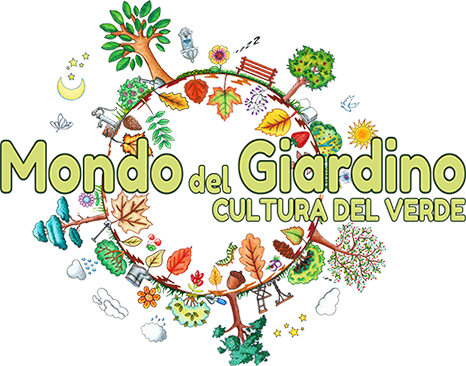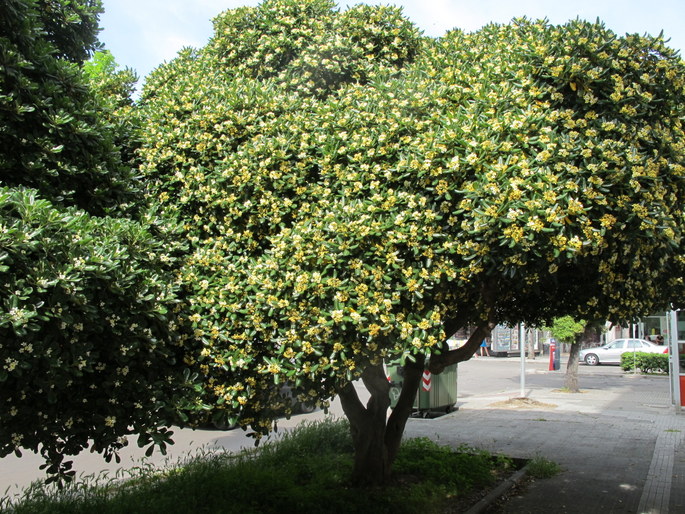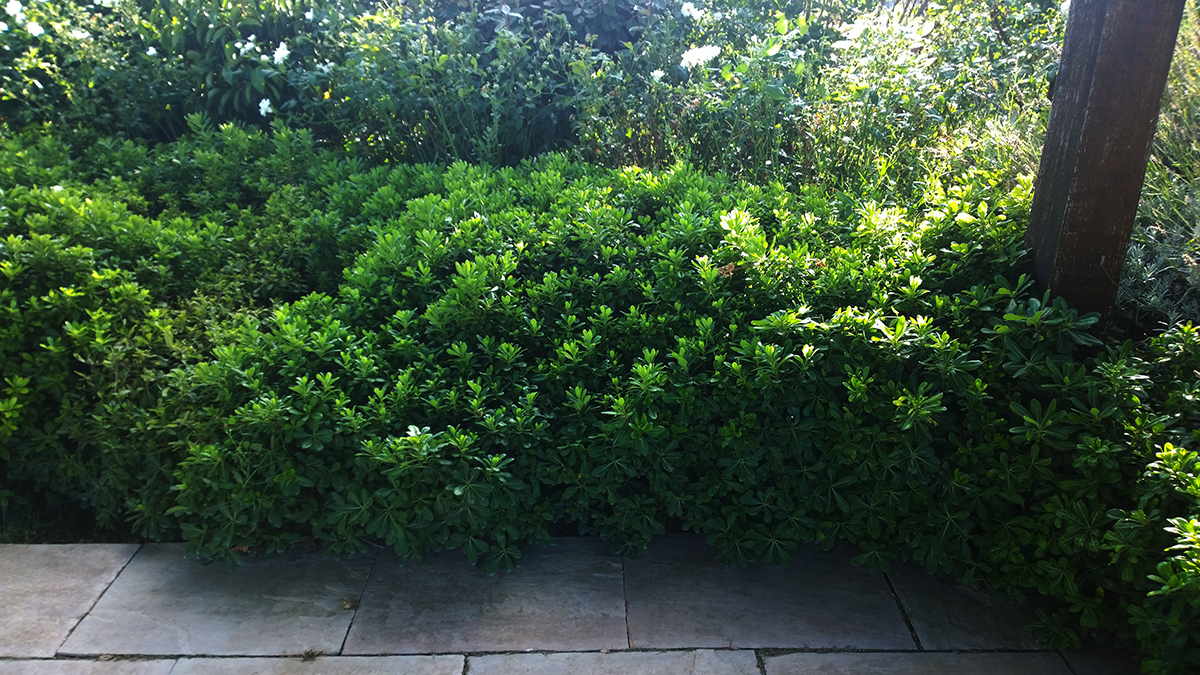IDENTIFICATION
Scientific name:
Pittosporum tobira
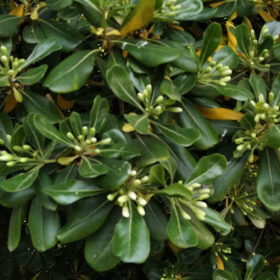
Italian common name:
Pittosporo
Family:
Pittosporaceae
Origin:
originally from southern China, Japan, Taiwan and Korea.
Environment:
Used in many countries around the world with mild winters, such as the Mediterranean ones.
Evergreen or deciduous:
evergreen
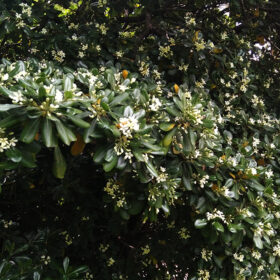
Toxicity:
non-poisonous but not edible fruits
PLANT RECOGNITION
Height:
it can reach ten meters in height in its areas of origin, while in Italy it rarely exceeds three or four metres.
Width (extension):
3 – 4 m.
Habit:
arboreal or shrubby
Leaf:
The leaves are persistent, leathery, with a shiny blade, obovate in shape and dark green in colour, alternate, shiny and oblong.
Flower:
The flowers, with five white petals at the opening, then take on a cream color and finally light yellow, gathered in umbrella-shaped tops 5-8 cm wide.
Flowering: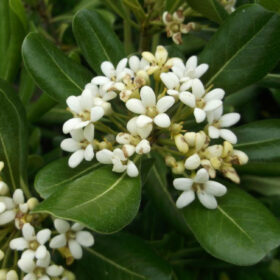
In Italy the plant flowers in March-May.
Fruit:
The fruits are red and contained in small green capsules that turn brown as they ripen.
Trunk:
The bark of Pitosforo is medium dark, thin and cracks very late. Alternating black and brown surfaces.
Property:
In Italy, pittosporum is cultivated only as an ornamental plant.
Parfume:
yes intense
NEED
Maintenance:
It requires little and sporadic cultivation care
It tolerates summer heat without problems, and also winter cold, but not below -10 °C
Light Exposure:
full sun or partial shade.
Soil type:
medium-textured soil tending towards compact. Fears water stagnation. It tolerates calcareous soils poorly.
Soil acidity:
pH 6,0 – 7,5. It has little tolerance for soils with a highly basic pH, which are often responsible for leaf chlorosis.
Italian climatic area:
Naturalized in most Italian regions, including islands. In marine locations in central Italy, in Southern Italy, in Sardinia, in Sicily and in Liguria.
Need for water:
Irrigate medium-abundantly in spring-summer if it doesn’t rain for a long time; scarce in winter.
Propagation:
Pittosporum reproduces by seed and semi-woody cuttings.
Pruning:
after flowering and you will have to proceed to reduce the foliage by about a third, eliminating the terminal part of the foliage
Diseases:
It is naturally resistant to parasitic attacks. Attacks by cochineal insects and in particular by cotonous scale insects can be very serious if action is not taken promptly.
However, it tolerates calcareous soils with a highly basic pH, which are often responsible for leaf chlorosis
PARTICULARITY 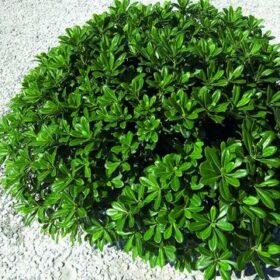
The name Pittosporum derives from the Greek pitta = “pitch” and sporos = “seed”; it therefore means “resinous seeds”, to allude to the fact that the seeds of this genus are covered in a sticky substance similar to resin. The specific name tobira is the transcription of the Japanese term tobira, abbreviation of the expression tobira no ki, which means “door tree”, as it was customary to attach twigs of this plant to the door jambs, as an apotropaic talisman.
Annotations
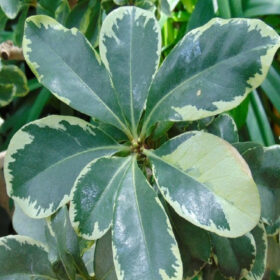
They are plants much visited by bees for their nectar and, if present in sufficient quantity, can produce excellent honey.
Resistance to salt and urban pollution.
Two interesting varieties are the “Nanum” perfect for small gardens, which has dimensions of around one meter in height and one and a half meters in width and the variegated which is instead as large as the Pittosporum tobira and certainly more delicate, but can resolve points a a little dark with an original solution and with the wonderful characteristics of the original plant already described.
In the kitchen:
it is not used.
THE MONDO DEL GIARDINO ADVICE
Due to their rusticity they are often used in public spaces, if you happen to walk in your town or city, pay attention, you will surely see some of them. Keep an eye on her and notice throughout the seasons how many gifts she gives!
Now on horseback! Work awaits us! Our new wonderful outdoor space is about to be born!
GOOD WORK and…if you have any questions, write to info@ilmondodelgiardino.com
Image sources: thanks for the cover photo floranelsalento.blogspot.com and for the following photos in order of insertion donnadipiante.it, unarancioalgiorno.blog, actaplantarum.org, reali.infoplant.it, lerosedifirenze.it and vivaifratellineri.it for the closing photo.
